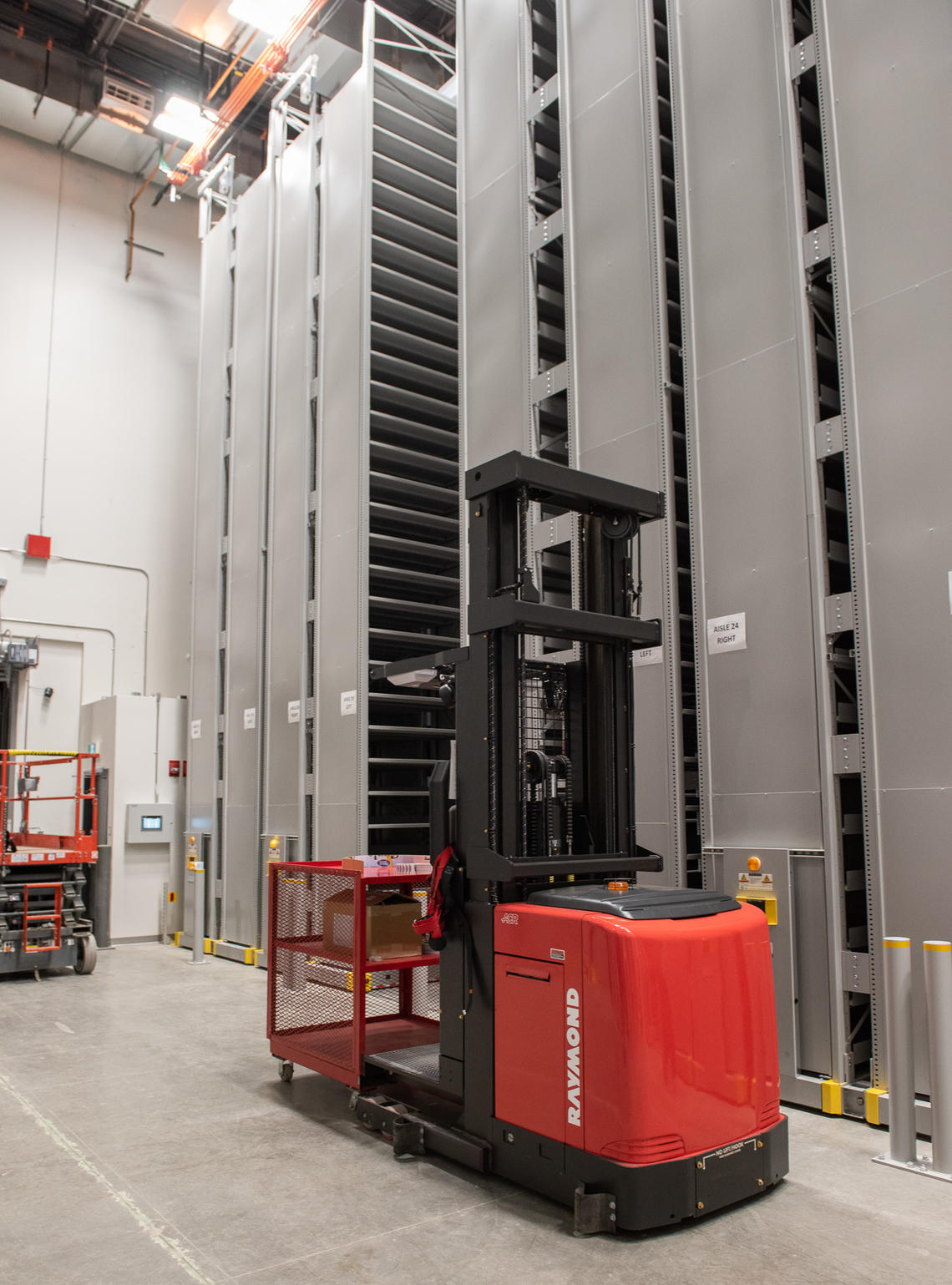Nov. 23, 2018
Expansion of High Density Library enhances support for campus community

Massive, nine-metre-high mobile shelving, 4,500 additional square metres of storage and processing space, a new archival conservation area and acoustically treated rooms for audiovisual preservation: these new features of the University of Calgary’s High Density Library (HDL) will strengthen support for students and researchers and enhance the maintenance of world-class collections well into the future.
The HDL expansion at the Spy Hill Campus was one of eight key UCalgary infrastructure projects that received federal funding from the Post-Secondary Institutions Strategic Investment Fund (PSI-SIF). The HDL is a high-performance, climate-controlled storage facility built in 2010. It was awarded Gold certification for Leadership in Energy and Environmental Design (LEED).
“Because of this expansion, we have been able to reimagine our workflows. The HDL is now the central intake and processing point for all materials coming to the university’s libraries, archives and special collections,” says Dr. Mary-Jo Romaniuk, vice-provost (libraries and cultural resources). “The new spaces greatly expand our capacity to care for collections of rare and unique materials of cultural significance.”
Twenty-seven staff members from main campus have relocated to the HDL to work in the expanded space for arranging, describing and processing library acquisitions including books and journals, donations and archival materials.

The expansion of the High Density Library added 4,500 square metres of storage and processing space.
“Dedicated and purpose-built spaces for preservation are essential for the long-term care and accessibility of vulnerable collection items such as audiovisual recordings, archival materials and rare books,” explains Annie Murray, associate university librarian for Archives and Special Collections. “Now, we are even better positioned to care for collections in a variety of formats, from early printed books to magnetic tapes and fragile paper documents.”
Mobile shelving — an innovation in library storage — has essentially doubled the HDL’s capacity. The additional space means the facility now accommodates more than 700 linear kilometres of archival materials, or an additional four million book volumes.
By storing certain materials at the HDL, the university is able to use space in campus libraries for collaborative learning, multimedia, data visualization and accessibility of primary resources such as archives, special collections and museum objects. Items requested by 10 a.m. on a weekday will be available for review at the Taylor Family Digital Library on the next weekday.

Mobile shelving makes efficient use of storage space.
